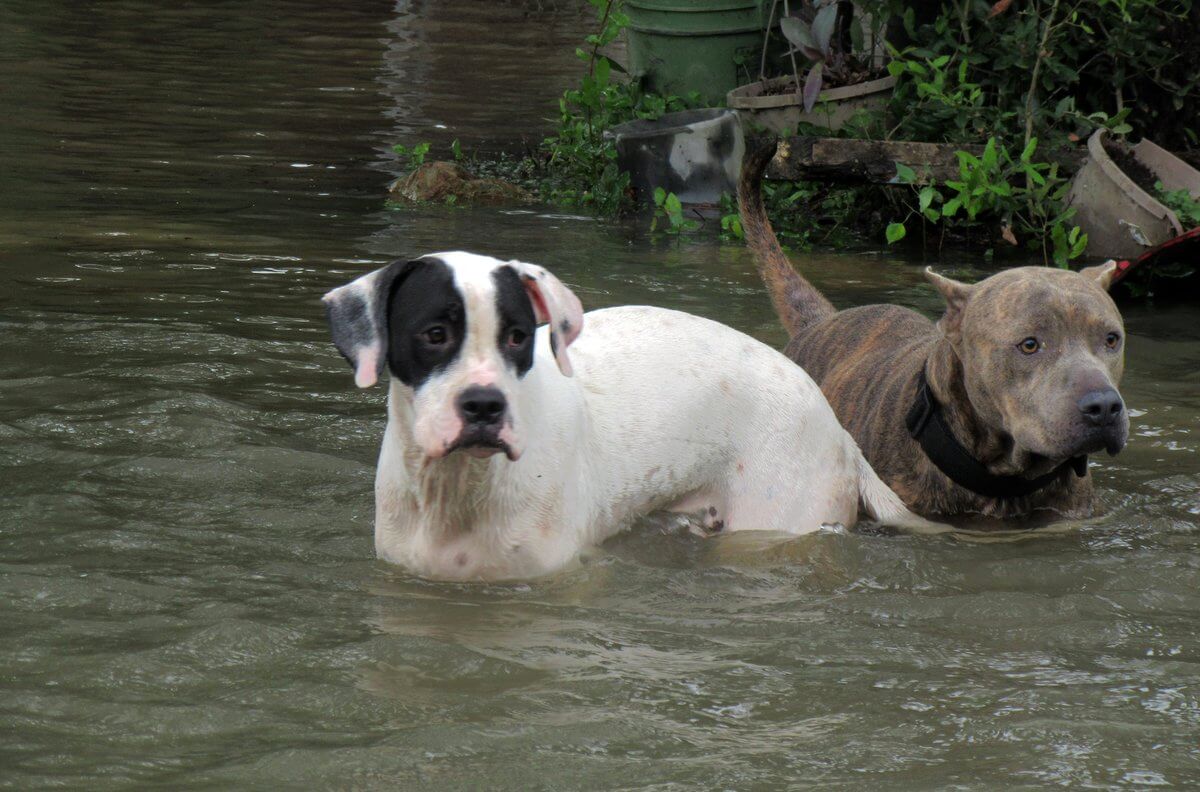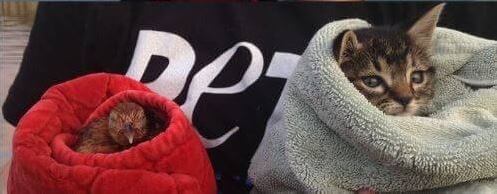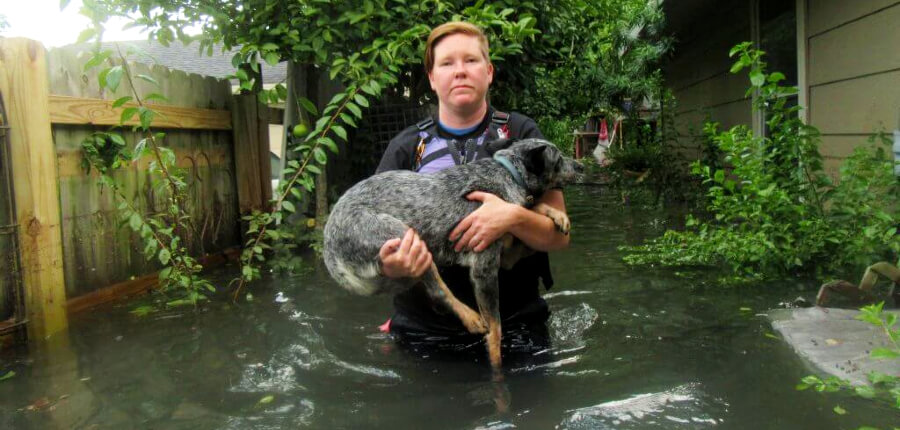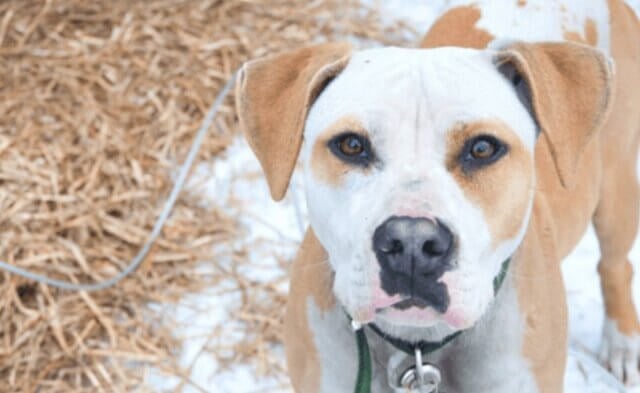Imagine watching your family quickly pack a bag and leave your house without saying a word to you. You can’t understand what they’re saying to each other during the chaos, but you sense their anxiety and know that something is wrong. You sit alone for hours, not knowing where everyone went or why they didn’t take you. Then comes the wind and rain, followed by loud claps of thunder. You’ve always been nervous about storms, but this one is worse. You try to find a safe, quiet spot to wait it out, but your normal hiding place is wet. The water is rising, and you’re locked inside with nowhere to go. After what seems like days, the storm moves on. But the water stays. You find higher ground and wait for someone to come home.

Countless animals face similar scenarios when their families evacuate without them ahead of natural disasters. They’re left to fend for themselves as their world crashes down around them. Where there’s suffering, PETA provides compassion. And when disaster strikes, we stand ready to help those in need.
When Hurricane Harvey devastated much of the Texas Gulf Coast earlier this year, members of PETA’s Rescue Team—equipped with a boat and plenty of supplies—headed to some of the hardest-hit areas. For a week, they trudged through toxic floodwaters in search of abandoned, lost, and injured animals. They helped hundreds of dogs, cats, and chickens—and even an armadillo—documenting their work on social media to raise awareness of the dangers that animals face during disasters. In one flooded home, PETA rescued a dog who had found the only remaining dry spot—on a bookshelf—and another who was floating on a mat in waist-deep water. Team members climbed through the window of another home to rescue two dogs who had been abandoned in crates, unable to escape the rising waters.

PETA’s Rescue team helping victims of Hurricane Harvey
PETA reunited several animals with their thankful guardians, and others were taken to safety at local shelters. To make room for displaced animals who could later be reunited with their families, our team returned to Norfolk with 67 cats and dogs who had already been in Texas and Louisiana shelters before the storm hit. They were divided among several local animal-protection groups, including PETA, for foster care and adoption.

Staffers barely had enough time to unpack before Hurricane Maria ravaged Puerto Rico and caused catastrophic flooding, leaving millions without power and endangering an untold number of animals. PETA chartered a plane to the island and spent two weeks helping well over 1,000 animals on the streets and in overwhelmed facilities.
PETA also partnered with Royal Caribbean to bring companion-animal food and supplies to Sint Maarten after Hurricane Irma. And when an earthquake toppled dozens of buildings and killed hundreds of people in Mexico City, we supported local animal rescuers.
All this happened in a matter of weeks.
PETA’s work on the ground goes a long way toward saving lives and eliminating suffering, but being prepared is the only way to prevent it in the first place. That’s why we send out tips for evacuating with animal companions and helping those in need ahead of hurricanes, tropical storms, wildfires, blizzards, and other emergencies. When local media outlets publish PETA’s advisories, millions who otherwise might not consider animals in the chaos of a natural or human-made disaster receive our message. Not all disasters are preventable, but the unnecessary suffering and death of animal companions are.
Protecting living, feeling beings involves more than not eating or wearing them, and humans aren’t the only ones at risk during emergencies. PETA’s work reminds the public that in the midst of a disaster, nonhuman animals deserve all the help that they can get, too.
Next week, in the third part of “PETA: A Force for Change,” we take a deeper look at PETA’s revolutionary social media tactics and how liking, sharing, and commenting has saved lives.





